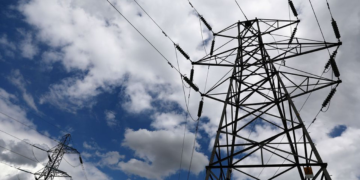The Nigerian Independent System Operator (NISO) has committed to ensuring fair and equitable dispatch of electricity from the Niger Delta Power Holding Company’s (NDPHC) vast but underutilised generation capacity, aiming to unlock up to 2,000 megawatts (MW) of stranded power currently idle across its plants.
NDPHC Managing Director/CEO Engr. Jennifer Adighije during a high-level meeting in Abuja, led a delegation to engage with NISO’s leadership, seeking regulatory support to optimise the dispatch of its power assets.
She was accompanied by the company’s Executive Director (Legal Services), Dr Steven Andzenge and Chief Operating Officer of Geregu Power Plant, Abiose Olayiwola.
Adighije called for a more equitable treatment of NDPHC in load dispatch, noting that despite owning the largest portfolio of power generation assets in the country, the company receives limited dispatch opportunities within the Nigerian Electricity Supply Industry (NESI). This is primarily because it lacks a power purchase agreement (PPA) with the Nigerian Bulk Electricity Trading Plc.
She revealed that NDPHC is actively pursuing bilateral Power Purchase Agreements (PPAs) with eligible customers and traders, with about 200MW expected to be commercialised by year-end pending regulatory approval.
Adighije emphasised that despite owning the largest portfolio of generation assets in Nigeria—over 5,000MW installed capacity across 10 power plants—NDPHC faces challenges in dispatch allocation due to the absence of PPAs with the Nigerian Bulk Electricity Trading Plc (NBET) and operational constraints tied to its government-owned status.
She highlighted ongoing efforts to improve plant availability, noting over a 100 per cent increase in just nine months, and the imminent return of the Alaoji Power Plant, offline for two years, expected to resume operations in August 2025.
Highlighting the company’s efforts to boost generation, Adighije disclosed that several units had been recovered, and that the Alaoji Power Plant—shut down for the past two years—is expected to return to operation next month.
She said, “Let me just mention that when I came on board, my vision was anchored on optimisation, an optimisation of the performance of our power plants, and that optimisation generally is around optimising our operations and then optimising the commercialisation of our stranded capacity.
“So, I know that every power plant is primarily judged by its plant availability. And so, when we came on board, we came up with a robust recovery strategy for improving our availability. And I can tell you that in nine months, we’ve improved our availability by 100 per cent or more.
“And we’re still working to recover one additional unit in Omotosho which will come up by the end of this month. And hopefully in the month of August, the Alaoji power plant, which has been offline for about two years, is also expected to come up to the grid in the month of August”.
The NDPHC boss also underscored the company’s significant investments in the power sector, including over 50 substations at 330kV, more than 25 at 132kV, and over 9,000 MVA of transformer capacity added, making it the largest contributor to Nigeria’s power infrastructure development.
“In this sector, I don’t want to be at risk of repeating myself or breaking the record of what I keep saying all the time. But I make bold to say that NDPHC is the largest contributor to power sector growth and infrastructure.
“In transmission alone, we have executed over 50 330kV substations, over 25 132kV substations, and we have added a transformer capacity of over 9,000 MVA. So, we have invested copiously. And bearing this in mind, if you can also put this into consideration, the fact that we are the largest investor in the sector, we would expect that you give us some special consideration when it comes to enforcement”
In response, NISO managing director Engr. Abdu Bello Mohammed, gave assurance that NDPHC would receive fair treatment in dispatch decisions, recognizing the company as the largest utility in the country. Bello acknowledged the current gap between NDPHC’s available capacity and actual dispatch—between 500MW and 800MW—and pledged to implement measures to optimize generation, dispatch coordination, and grid stability.
Bello also highlighted plans to integrate NDPHC fully into the national grid’s SCADA/EMS platform for real-time dispatch and frequency control, and to review the Economic Merit Order Dispatch model to ensure fairness for government-owned generators. He stressed the importance of leveraging NDPHC’s capacity to support Nigeria’s power base and expand regional electricity trade through the West African Power Pool (WAPP).
The collaboration between NISO and NDPHC signals a strategic push to unlock stranded electricity, improve liquidity, and enhance the commercial sustainability of government-owned generation assets, ultimately aiming to strengthen Nigeria’s national grid and power supply reliability.






